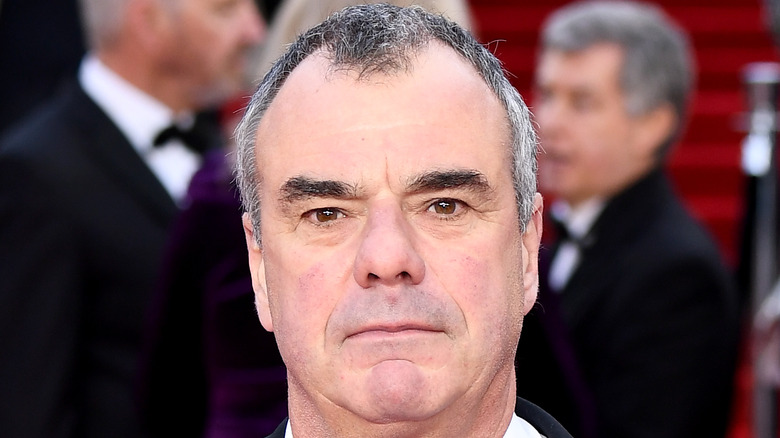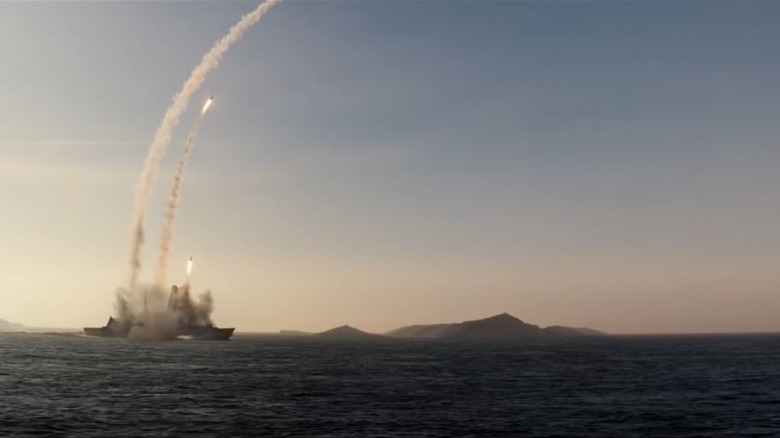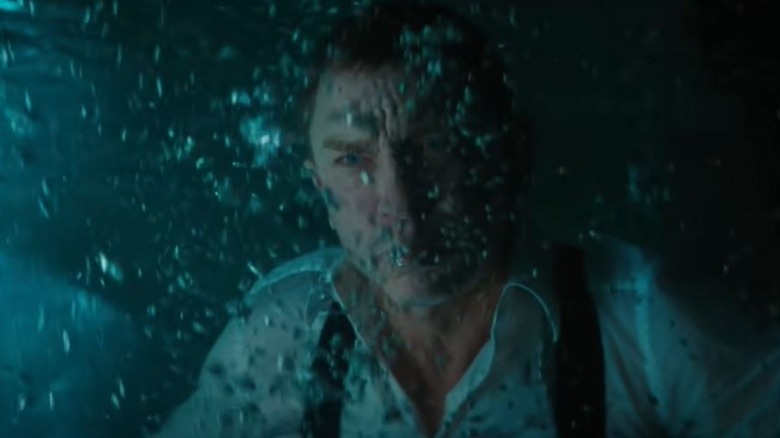No Time To Die SFX Supervisor Chris Corbould Talks Daniel Craig, Explosions, Superheroes - Exclusive Interview
If you've seen more than a few blockbuster action movies in the past decade, you've probably seen Chris Corbould's work. Corbould has been working in the special effects business since the 1970s, and has worked as a special effects supervisor since the '90s. He's a somewhat regular collaborator of Christopher Nolan, and also worked on most of the Star Wars sequel movies. He's also worked on superhero movies, including "The Dark Knight," "X-Men: First Class," and the upcoming "Doctor Strange in the Multiverse of Madness."
He's worked in the special effects department on Bond movies in particular since 1977 and has been the special effects supervisor for every one since and including "Goldeneye." He reprised that role for "No Time To Die," which is now available on disc.
At a recent press event, Looper was able to submit questions to Corbould about his work on "No Time To Die." He told us about the similarities between Brosnan's movies and Craig's movies, how they made That Big Explosion, and just how involved Daniel Craig was in every part of the movie (We'd like to extend our thanks to Mandy Rodgers from Think Jam for relaying our questions to Corbould).
Brosnan, Craig, and The Big Explosion
From a tech standpoint, what's the difference between the Brosnan films for you and the Craig films?
There's not a lot of difference between them. There's not a lot of difference between Pierce Brosnan, the films, and the Daniel Craig films. It's more about what's in the script. In Pierce Brosnan, in "The World is Not Enough," we had the caviar house being cut up by helicopter. You know, in Daniel's films, we had the sinking of the house in Venice, and then the tube train coming in through the roof. It's more about what's in the storyline than who the actor is.
Can you talk more about what inspired the magnet elevator effect, and how that all came about for you, and the challenges?
I have no idea how the magnet-inspired lift shaft came about. It was something I think Cary Fukanaga and the writers came up with. All we had to do was drop a bomb in, and hit the ground, and do an explosion on the bottom, so I don't whose initial thoughts that came from.
For "No Time to Die," was there anything that you envisioned, that you had to cut just because it didn't work out, like some ideas?
There wasn't really anything we had to cut out. I mean, we built, on the DB5, obviously, there was the original revolving number plate, and we made an LED version this time, which just changed like an LED screen, which they cut out the film, so that's one thing they didn't use.
Can you talk more about the explosion at the end? Because that's such a pivotal moment, and how you kind of designed that, and how that works for you and your team?
The explosion at the end was a combination of special effects and visual effects. We went to Salisbury Plain, and we rigged up three massive explosions that were, had the same parameters as the bunkers in the film. So we did the three explosions, and shot them, and then the visual effects put them in, adapted them, and put them in, and married them up with Daniel and the scene.
Working with Daniel Craig
Did Daniel Craig ever work with you, have any input, have any things with any of his pieces of the movie?
Daniel Craig has worked with us on every film. He's very keen to get involved with everything we do, so we get the best results. And particularly, on "No Time to Die," he was heavily involved in the sinking trawler sequence. You know, we built the entire set on like a spit-roast that could rotate 360 degrees, and sink into 20 foot of water. And I mentioned early on to Daniel that he should come down and rehearse with Jeffrey Wright because it was quite claustrophobic, and he needed to get used to it. And he's always very keen to come down and rehearse. And we rehearse a couple of days, and they got used to it, sinking. There were lots of safety panels that you could push out if they got a bit panicky, but Daniel and Jeffrey did a wonderful job, and it made a wonderful scene.
So you've obviously worked on so many Bond movies. You've also on superhero movies, like "The Dark Knight," and "Doctor Strange" is coming up. Is there any way you go into those projects differently? Like Bond versus superheroes, or how do you approach those?
With working on Bond films and with Christopher Nolan, [the directors] both really want to do everything in reality, in-camera, as much as possible. When I do work on big superhero films, a little bit is in the hands of the visual effects because they are so fantastical. Chris Nolan and the James Bond [directors], they always have the mantra that they want to do everything in-camera, wherever possible, and only use visual effects if it's necessary for safety reasons or economic reasons. They're very different worlds really.
"No Time To Die" is now available on 4K UHD, Blu-ray, and DVD.


